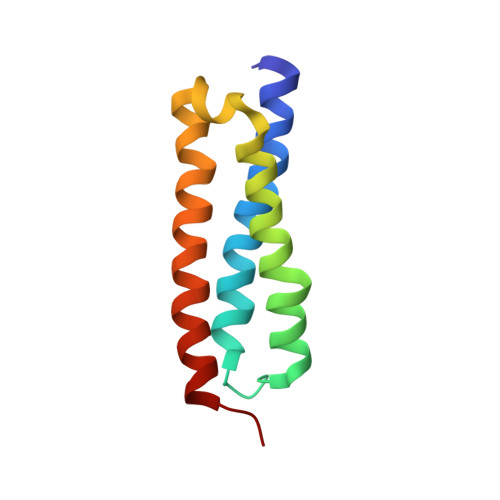Vam3p structure reveals conserved and divergent properties of syntaxins.
Dulubova, I., Yamaguchi, T., Wang, Y., Sudhof, T.C., Rizo, J.(2001) Nat Struct Biol 8: 258-264
- PubMed: 11224573
- DOI: https://doi.org/10.1038/85012
- Primary Citation of Related Structures:
1HS7 - PubMed Abstract:
Syntaxins and Sec1/munc18 proteins are central to intracellular membrane fusion. All syntaxins comprise a variable N-terminal region, a conserved SNARE motif that is critical for SNARE complex formation, and a transmembrane region. The N-terminal region of neuronal syntaxin 1A contains a three-helix domain that folds back onto the SNARE motif forming a 'closed' conformation; this conformation is required for munc18-1 binding. We have examined the generality of the structural properties of syntaxins by NMR analysis of Vam3p, a yeast syntaxin essential for vacuolar fusion. Surprisingly, Vam3p also has an N-terminal three-helical domain despite lacking apparent sequence homology with syntaxin 1A in this region. However, Vam3p does not form a closed conformation and its N-terminal domain is not required for binding to the Sec1/munc18 protein Vps33p, suggesting that critical distinctions exist in the mechanisms used by syntaxins to govern different types of membrane fusion.
Organizational Affiliation:
Department of Biochemistry, University of Texas Southwestern Medical Center, 5323 Harry Hines Blvd., Dallas, Texas 75390, USA.














